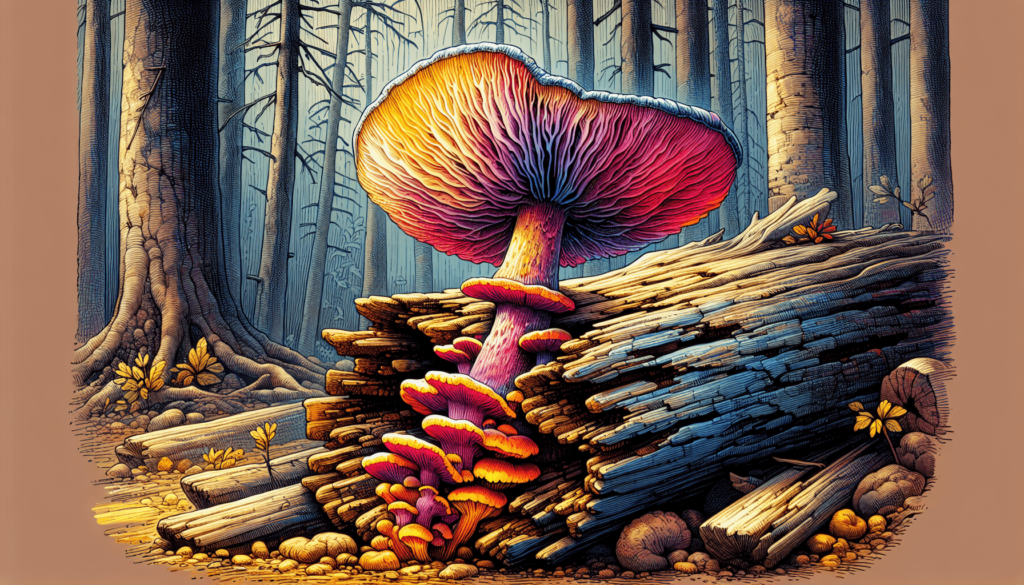When it comes to cozying up by the fire, not all wood is created equal. In “What Wood Shouldn’t You Burn?” I dive into the surprising list of woods that are best avoided due to their potential hazards, from toxic fumes to excessive creosote buildup. This story uncovers the environmental and health implications of burning unsuitable wood, ensuring that your fireplace keeps you warm without causing unexpected harm. It’s a must-read guide for anyone looking to enjoy their hearth responsibly. What Wood Shouldn’t You Burn?
Have you ever cozied up by the fire, only to find yourself coughing like an amateur chainsmoker or wondering if you inadvertently summoned the local fire department for a surprise visit? I have, and let me tell you, it’s an ordeal that leaves an impression. But let’s face it – there’s nothing quite like the allure of a roaring fire, especially when the weather outside is frightful. It turns a house into a home, a moment into a memory. However, not all wood is fit for such a magical experience. So, what wood shouldn’t you burn?

The Hazards of Burning the Wrong Wood
I remember the first time I tried to burn an old piece of painted wood. It was a disaster, complete with a plume of toxic smoke and an asthma attack to boot. Here’s the thing: not all wood is created equal. When it comes to what you should and shouldn’t burn, there are critical considerations for your health, home, and the environment.
Health Hazards
Burning the wrong type of wood can pose serious health risks. Ever heard of creosote? This isn’t some quirky relative refusing to leave after Christmas dinner. It’s a thick, oily substance that can build up in your chimney, leading to a potential house fire. And that’s just the beginning.
Environmental Impact
Despite our little fireside indulgences, we mustn’t forget Mother Earth. Some woods release harmful pollutants that contribute to air pollution and greenhouse gases. Burning certain materials can have lasting effects on the environment, something that may come back to haunt us (much like that uncle who won’t stop telling the same story every Thanksgiving).
Types of Wood You Should Avoid
Painted or Treated Wood
One of my rookie mistakes was burning painted wood. The chemicals in paint and treatments release toxic fumes that are harmful when inhaled. We’re talking about substances like arsenic and chromium here – hardly what I had in mind for my cozy night by the fire.
| Wood Type | Harmful Chemicals Released |
|---|---|
| Painted Wood | Lead, Cadmium, Other heavy metals |
| Treated Wood | Arsenic, Copper, Chromium |
Green Wood
Green wood sounds eco-friendly, but don’t let the name fool you. It’s freshly cut and full of moisture. Burning it will result in a lot of smoke, poor heat output, and a build-up of creosote in your chimney.
Driftwood
The romance of driftwood might seem irresistible, but burning it is another story. Driftwood often contains salt, which can corrode your fireplace and release toxic substances into the air.
Plywood and Particleboard
Next on the list: plywood and particleboard. These materials are usually held together with adhesives that release carcinogenic fumes when burned. Trust me, you don’t want formaldehyde in your living room.
Alternatives: What You Should Burn
Seasoned Hardwood
If you want the Gold Standard of firewood, go for seasoned hardwood. Oak, maple, and ash are excellent choices. These woods burn hot and long, with minimal smoke. The seasoning process, which involves letting the wood dry out over several months, ensures that it burns efficiently.
Softwood Alternatives
Softwoods like pine can be acceptable in a pinch but are better suited for kindling rather than a sustained fire. They burn fast and hot, which is great for starting a fire but not ideal for an evening-long blaze.
Safety Measures for Using a Fireplace
Proper Ventilation
Always ensure proper ventilation in your fireplace. This means regularly cleaning your chimney and using well-maintained fireplace tools. I know, cleaning isn’t glamorous, but it beats waking up to a house full of smoke.
Smoke Detectors
Smoke detectors are non-negotiable. If you don’t have them installed, do it now. They’re like that annoying but well-meaning friend who insists on telling you not to binge-watch Netflix – you might get irritated, but deep down, you know they’re right.
Fire Extinguisher
Ever try putting out a fire with a cup of water? Let’s just say it’s not a good plan. Keep a fire extinguisher nearby. Even if you never use it, knowing it’s there will give you peace of mind.

How to Properly Season Your Firewood
Cutting
First, get yourself a good quality saw and cut the wood into manageable pieces. Think of it as prepping in advance, like chopping vegetables before a grand feast. The pieces should be uniform in size to ensure they dry out evenly.
Stacking
You want to stack your wood in a manner that allows air to circulate through the pile. Leave some space between the logs. Imagine you’re arranging a bunch of oversized Jenga blocks – strategically placed gaps are essential.
Covering
While you need air circulation, you don’t want your wood getting soaked every time it rains. Use a tarp to cover the top of your stack, but leave the sides open to allow for that crucial airflow.
Waiting
And now, the hardest part – waiting. It takes anywhere from six months to a year for wood to season properly. I suggest starting this process in the spring or early summer, so by winter, you’ve got a delightful stash ready to go.
| Season | Activities |
|---|---|
| Spring/Summer | Cut and Stack Wood |
| Fall/Winter | Ensure Wood is Covered and Seasoning Properly |
The Pros and Cons of Buying Pre-Seasoned Wood
Pros
- Convenience: No need to wait for seasoning.
- Consistency: Usually, the wood has been dried to optimal levels.
- Availability: Widely available in most home improvement stores.
Cons
- Cost: Can be significantly more expensive.
- Quality Control: You might not always get what you pay for. Trustworthy sources are crucial.
- Transport and Storage: Buying in bulk can be cumbersome and requires adequate storage space.
Wood Stoves Vs. Fireplaces
Efficiency
Wood stoves are far more efficient than fireplaces. They burn wood more completely, providing more heat and less smoke. If you’re serious about maximizing your wood’s heat potential, a wood stove is an excellent investment.
Aesthetics
While wood stoves are practical, fireplaces win hands down in the aesthetics department. There’s nothing quite like an open fire. If you’re more about the experience than the utility, stick with the fireplace.
Maintenance
Wood stoves are generally easier to maintain, with fewer creosote issues and a more controlled burn environment. Fireplaces, while charming, require more upkeep, from chimney sweeps to constant ash clean-up.
Sustainable Wood-Burning Practices
Local Sources
Buying local helps reduce the carbon footprint associated with transporting wood. Plus, it supports your community’s economy.
Responsibly Harvested Wood
Make sure your firewood comes from sustainably managed forests. Look for certifications like FSC (Forest Stewardship Council) to ensure you’re not contributing to deforestation.
Recycling and Repurposing
Instead of burning that wobbly old chair, consider recycling or repurposing it. With a bit of creativity, it could turn into a charming piece of decor rather than a smokey mess.
Final Thoughts: Your Fireside Choices
So, there you have it – a detailed guide through the do’s and don’ts of wood-burning, peppered with personal misadventures for your reading pleasure. By now, you should be well-equipped to choose the right wood for your firewood, ensuring a safe, warm, and environmentally friendly experience.
Remember, the secret to a great fire lies not just in the flames but in the choices you make beforehand. Choose wisely, stay safe, and enjoy those cozy nights by the fire – but please, save the painted wood for a different kind of art project.

